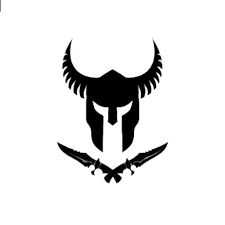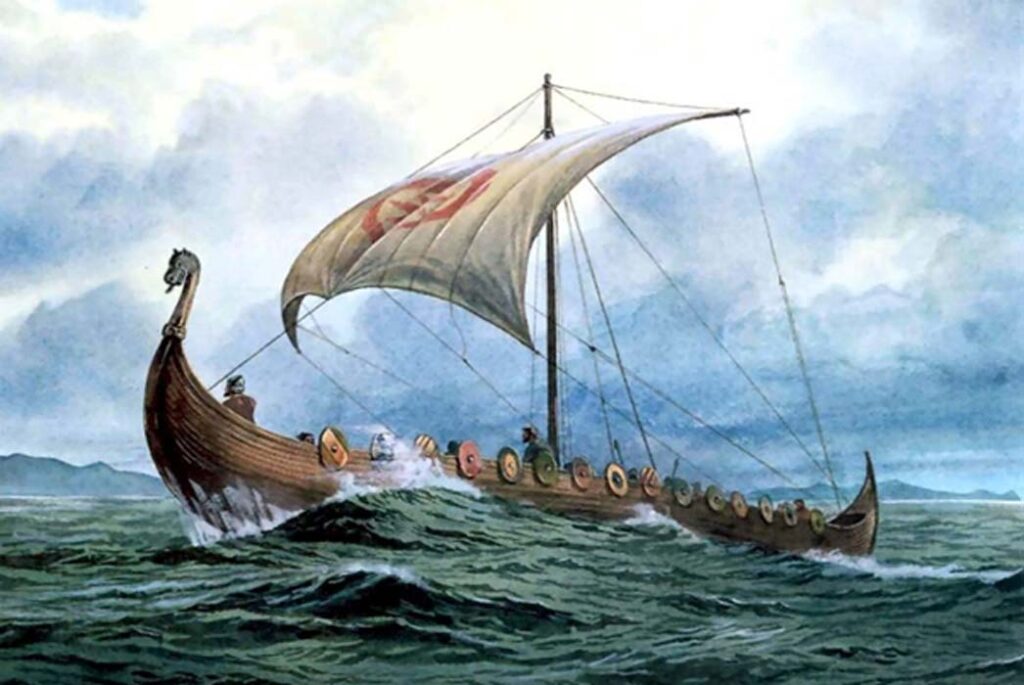Unveiling the Story, Types, and Art of Viking Ship Navigation
Few sights struck more fear into medieval hearts than the sight of a fleet of longships approaching their homeland. The Viking ship is renowned for its unique style.
Summary
ToggleThe famed Viking ship is the epitome of Viking history. Viking ships have been the subject of many discussions and questions. Looking for answers? Trust me, and read on…
In this article, we will explore:
- The History of Viking Ships
- Names and Types of Viking Ships
- The Art of Viking Navigation
The History of Viking Ships
The Viking Age began in 793 AD when raiders from Scandinavia attacked the isolated Lindisfarne Monastery, an island off the coast of Northumberland. These invaders made off with treasures and captives. Within a few years, other Viking bands struck Scotland (794), Ireland (795), and France (799).
Initially, Viking raids were small-scale affairs, conducted by a few boats filled with men who returned home after each attack. However, in the 850s, they began wintering in southern England, Ireland, and along the Seine in France, establishing bases from which they began to control the interior. In 885, a Viking army besieged and nearly captured Paris. They set up a settlement in the Orkneys, Scotland, and invaded the Shetland and Hebrides.
What Were Viking Ships Called ?
There are two main families of Viking saga boats: the “langskip,” which are warships, and the “kaupskip,” which are merchant ships.
Viking Warships :
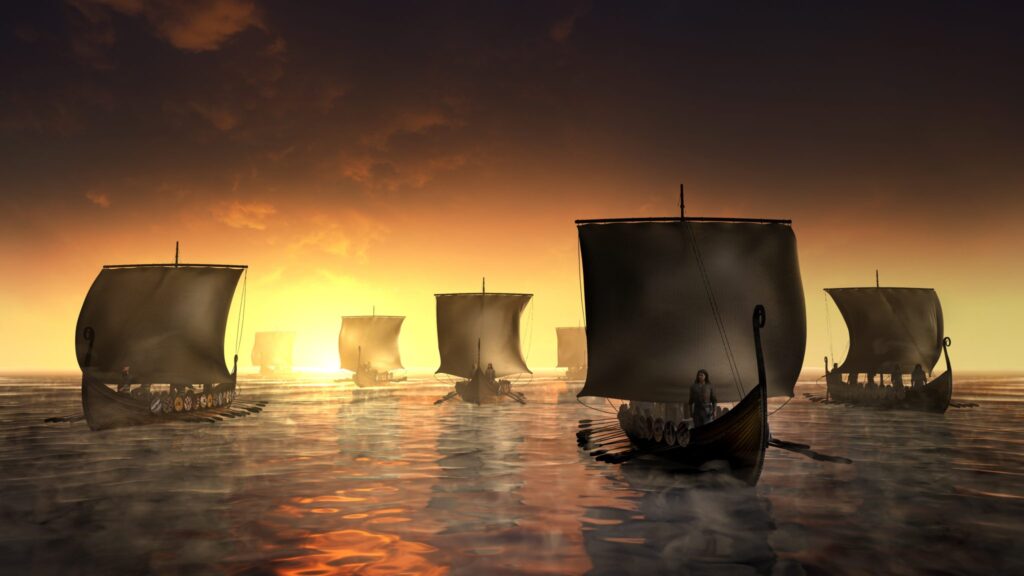
1. Snekkja :
- The snekkja was generally the smallest Viking warship and was classified as a boat with at least 20 oars.
- A typical snekkja measured 56 feet in length and had a draft of only 1-1/2 feet.
- Viking ships carried a crew of at least 41 men.
- Norwegian snekkjas were designed for deep fjords and the Atlantic climate.
2. Karvi Viking :
- The karvi-class boat was the smallest Viking boat in terms of overall size and would have been used for combat or small raiding parties.
- Nordic Karvi boats were sometimes longer than Snekkja-class boats but were also much narrower.
- Karvi ships would have had a variable range of oars, from 12 to 32 pairs of oars.
3. Knarr Viking :
- A Knarr was a Viking ship used for cargo storage – a cargo ship with a wide hull, deeper, and shorter than the standard Norse ship.
- Knarrs could carry more goods, and much smaller crews used them.
- The term “Knarr” in Old Norse means a type of boat built for long sea voyages, used during the famous Viking expansion.
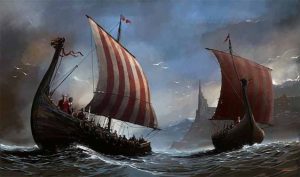
Features of Viking Saga Boats
Materials:
- Vikings used oak (in Denmark) and pine (in Norway) for shipbuilding. The hull was often ash.
- They used iron extensively. Animal and plant fibers were also used for rigging, such as horsehair for sheets or lime bark fiber for shrouds.
- Different colors were used for hull and sail paintings, with pine tar used to cover the structure.
Dragon Head on the Prow:
- The dragon head on the prow was not just for intimidation but also to emphasize the importance of the ship’s owner.
- When preparing for peaceful encounters, Norse sailors would remove or disguise the figurehead to avoid the wrath of spirits.
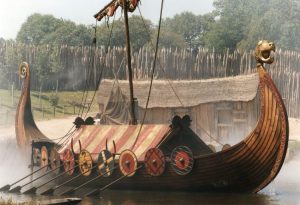
Advantages of Viking Ships
In the Viking era, few ships could rival the speed of a Viking ship, but they were also highly agile. Thanks to their shallow draft, Norsemen could easily navigate rivers and fjords, suddenly attacking enemies in hard-to-reach places.
Viking warships were also barely visible between waves due to their low sides. This allowed the Vikings to take their enemies by surprise, even in the open sea.
Viking ships were not only created for war but were robust and spacious, sometimes used for trade and goods transportation. Most often, these boats were used for long-distance travel.
How Far Did Vikings Travel ?
Vikings reached the coasts of Greenland, Iceland, and North America.
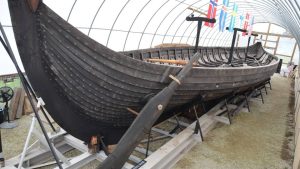
Viking Ship Construction
Viking ship builders assembled the ship’s parts with iron rivets and nails, fastening them with ropes and cords, then sealed the structure and filled gaps, making the seams watertight. When done correctly, an air layer formed under the Viking ship when it moved quickly on water, giving it more speed and stability.
The sail was square or rectangular, made of sheep’s wool, and coated with grease to repel water. When there was no wind, Vikings used oars, with 20 to 35 pairs on average.
Vikings built their ships from pine, oak, or ash. They used a special technique to split trees along the grain, soaked the planks, and held them over a fire to make them more flexible.
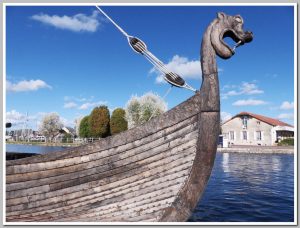
Viking Ship Names
The word “drakkar” comes from the Old Norse words “dreki” (dragon) and “kar” (boat). Some argue that “dreki viking” originated from the Latin “draco,” but the Scandinavians rarely used Latin in the Viking Age.
Names in the Old Oïl Language :
- Longship
- Skeid (Old Norse: skeið), meaning “large warship”
- Snekkja, meaning “warship”
- Knorr (Old Norse: knörr, genitive knarrar)
- Ecaude: Small canoe assembled from a single log, then a small boat or flat-bottomed boat propelled by a pole.
How Many Vikings Were on a Drakkar ?
During the Scandinavian era, Viking ships had great durability. Crews of 25 to 60 warriors were common. As for longships, the number of traveling men could reach around 100 or more, making them highly advantageous.
Viking Navigation
Viking navigators are known for traversing the North Seas, discovering Greenland, and setting foot in America by the 10th century. Despite not having compasses, they managed to find their way on the open sea, where the weather was often cloudy and the sun low on the horizon.
This article provides just a glimpse into the fascinating adventures of the Vikings. To explain this feat, Norse sagas mention the existence of “sunstones” or “Viking navigation crystals” capable of indicating the direction of the sun. However, the exact nature of these legendary stones remains undetermined. If you want a reminder to stay on the right path…
